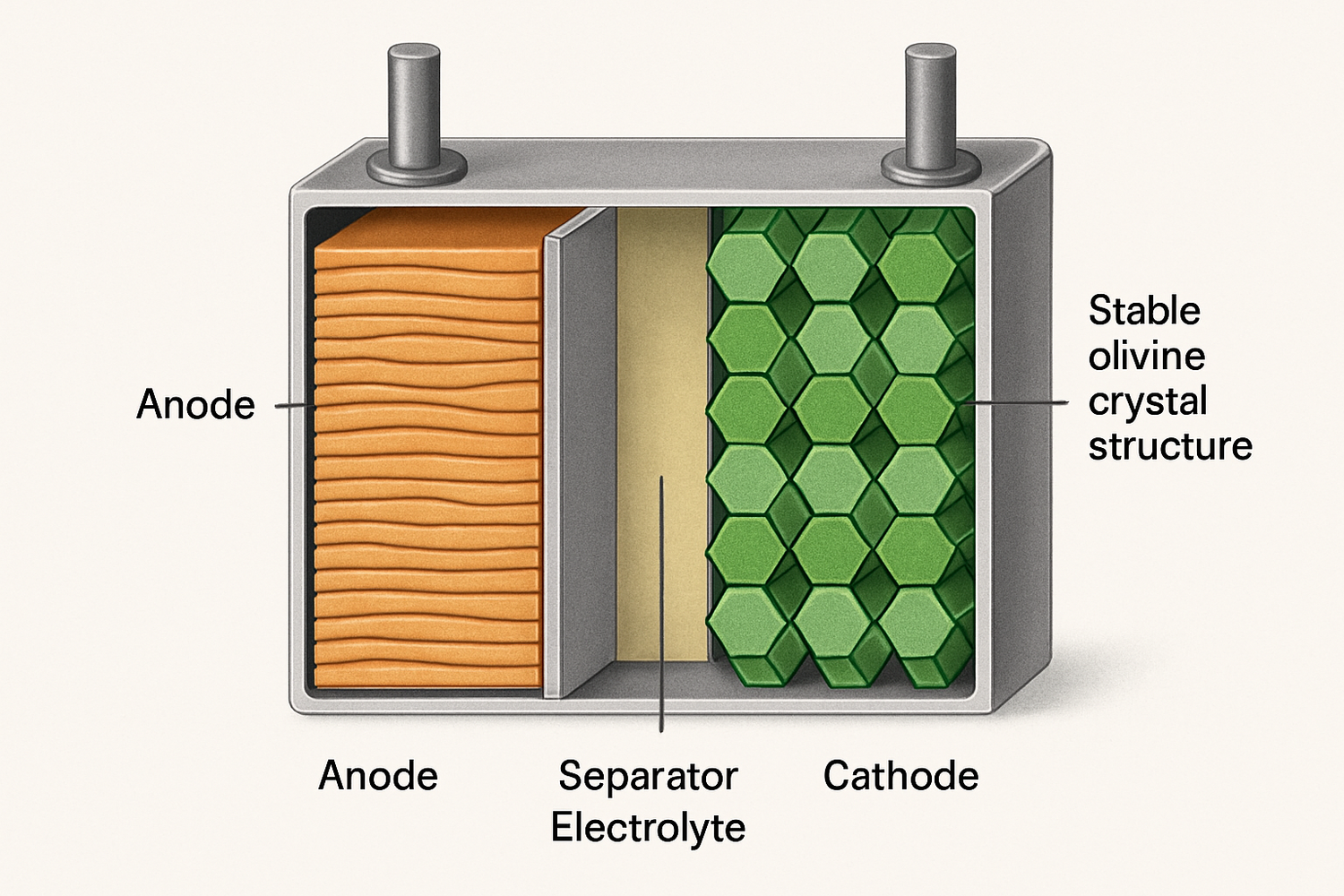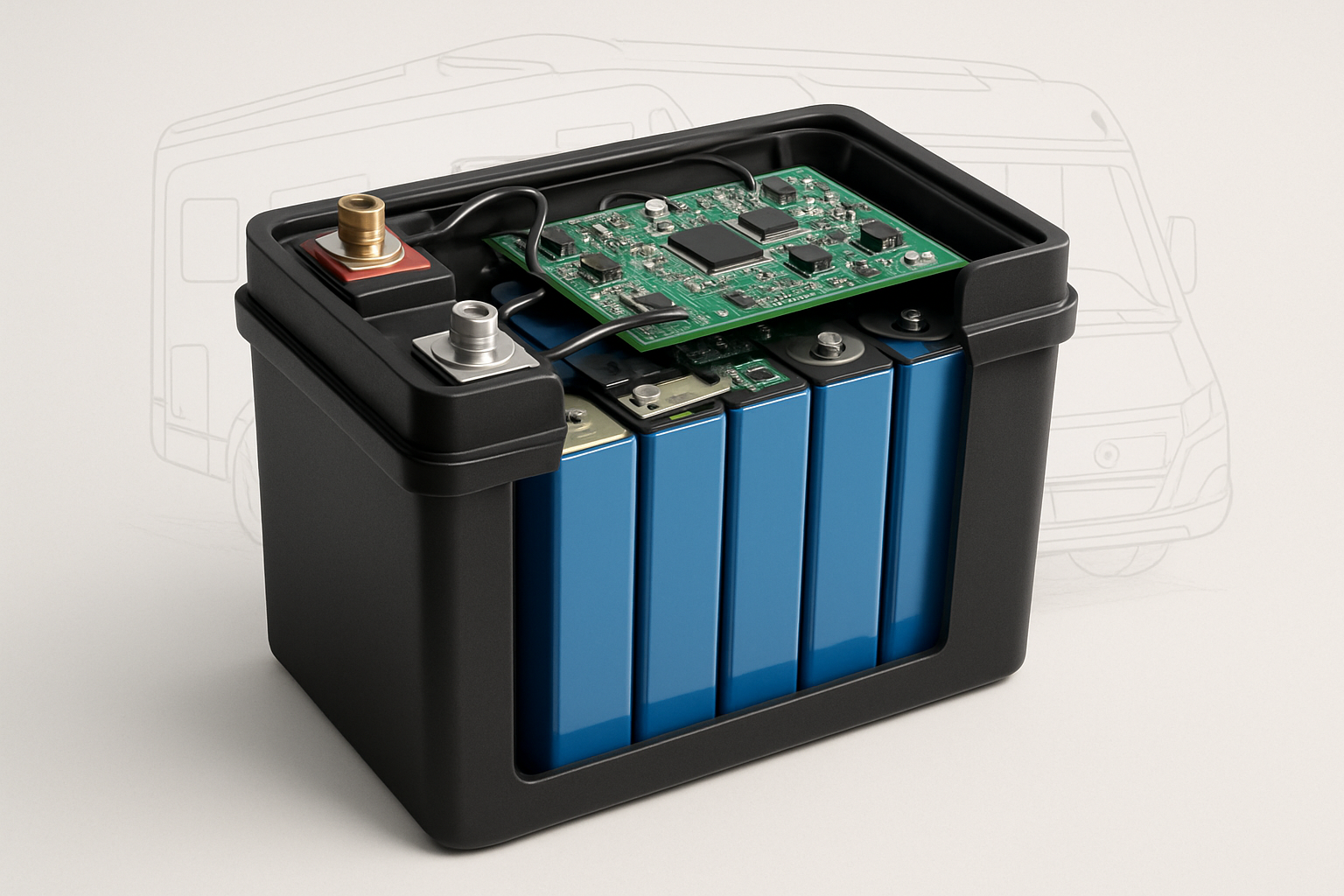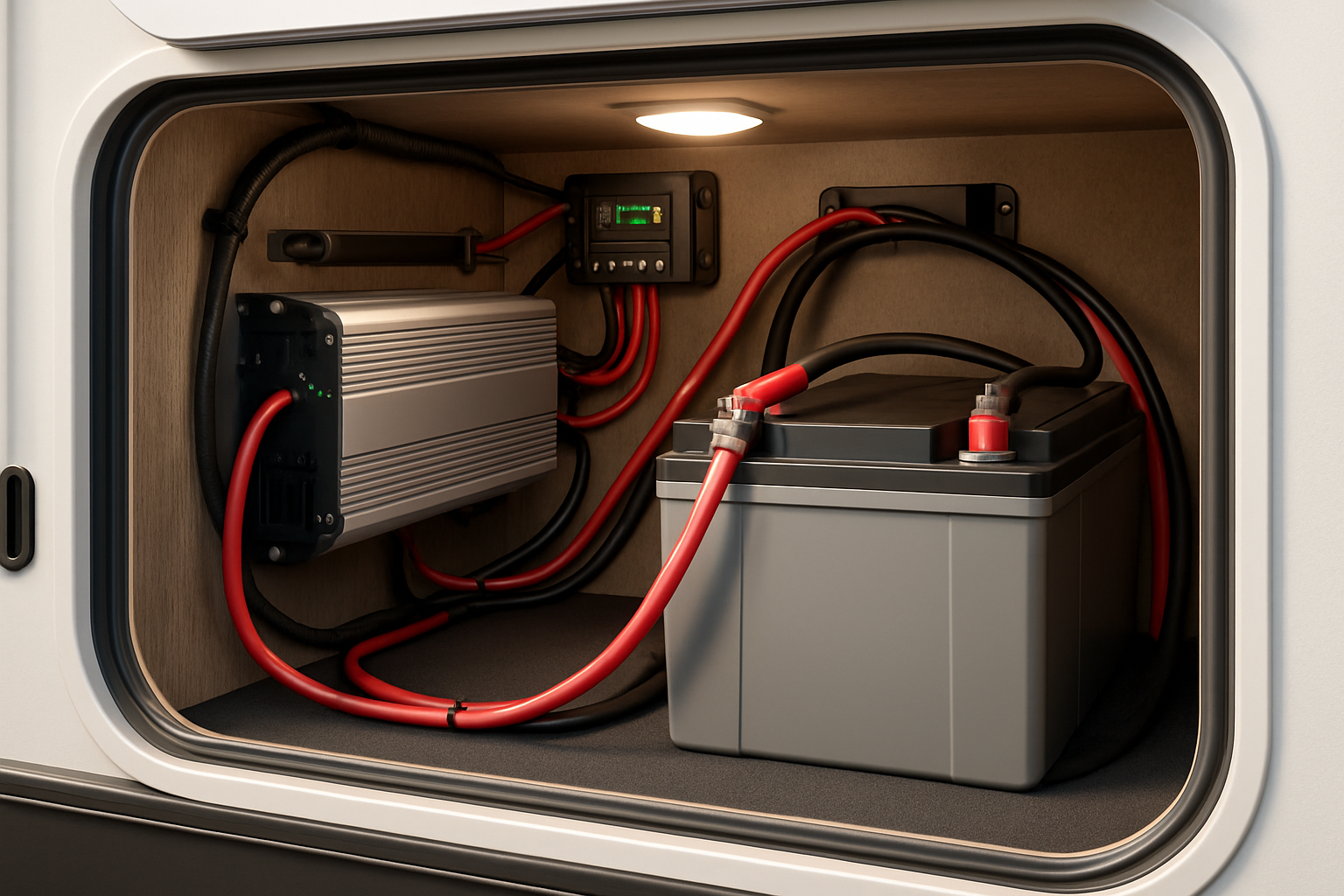When upgrading your RV's power system, safety is paramount. The market for deep cycle batteries is filled with options, but one technology consistently stands out for its robust safety profile: Lithium Iron Phosphate, or LiFePO4. This chemistry offers a unique combination of stability, longevity, and reliability, making it an ideal choice for the demanding environment of a recreational vehicle. Understanding the science behind its safety provides confidence in your off-grid power solution.
Understanding the Landscape of Lithium Batteries
Not all lithium-ion batteries are created equal. The term 'lithium-ion' refers to a family of battery chemistries, each with distinct characteristics. The specific materials used in the cathode dramatically influence a battery's performance, energy density, and, most importantly, its safety.
A Glimpse at Different Lithium Chemistries
Many consumer electronics and electric vehicles use high-energy-density chemistries like Nickel Manganese Cobalt (NMC) or Nickel Cobalt Aluminum Oxide (NCA). These batteries are engineered to be lightweight and compact, which is perfect for portable devices. However, this high energy density can come at the cost of reduced thermal stability and a shorter cycle life compared to other options.
The LiFePO4 Difference
LiFePO4 batteries utilize a different cathode material: lithium iron phosphate. This choice results in an exceptionally stable molecular structure. According to a report from the International Energy Agency (IEA), LFP technology presents a fair compromise for both mobile and stationary applications due to its inherently safer chemical composition and lack of cobalt. This inherent stability is the foundation of its safety advantages, making it a preferred technology for applications where safety and longevity are the primary concerns.
Core Safety Advantages of LiFePO4 Technology
The safety of a LiFePO4 battery isn't an added feature; it's an integral part of its chemistry. Several key factors contribute to its reputation as the safest deep cycle lithium battery available for RVs.
Superior Thermal Stability
Thermal runaway is a significant concern with lithium-ion batteries. This event occurs when a cell overheats, leading to a chain reaction that can result in fire. LiFePO4 chemistry is far less prone to this. The phosphate-based cathode is much more stable than its cobalt-based counterparts and can withstand higher temperatures before becoming reactive. The thermal runaway threshold for a LiFePO4 cell is approximately 270°C (518°F), significantly higher than the 150-210°C range for most NMC and NCA batteries.
Robust Chemical and Structural Integrity
The strength of a LiFePO4 battery lies in its olivine crystal structure. The phosphorus-oxygen (P-O) bond within this structure is incredibly strong. During overcharging or short-circuit conditions, this structure resists breaking down and releasing oxygen. Oxygen release is a key ingredient that fuels thermal events in other lithium chemistries. By keeping oxygen locked within its molecular structure, a LiFePO4 battery dramatically reduces the risk of fire, even under severe abuse.
High Tolerance to Abuse
In real-world scenarios, batteries can be subjected to less-than-ideal conditions. A 12v LiFePO4 for RV use is built to handle this. This chemistry demonstrates remarkable resilience to mechanical stress, such as vibration or impact. In puncture and crush tests, LiFePO4 cells are significantly less likely to short-circuit violently or ignite compared to more energy-dense chemistries. This durability provides an essential layer of safety for any mobile application.
Practical Safety for RV Power Systems
The theoretical safety of LiFePO4 chemistry translates directly into practical benefits for RV owners. An RV is a home on wheels, and its power system must be dependable and secure in a dynamic environment.
Meeting the Demands of a Mobile Environment
An RV lithium battery is constantly subjected to vibrations from the road and fluctuating ambient temperatures. The stable structure of LiFePO4 cells ensures they can handle these physical stresses without compromising internal integrity. This resilience is critical for preventing internal shorts and other failures that could lead to safety issues over time.
The Crucial Role of a Battery Management System (BMS)
While the battery chemistry is inherently safe, a high-quality Battery Management System (BMS) provides an indispensable layer of electronic protection. The BMS is the brain of the battery pack, continuously monitoring cell voltage, current, and temperature. It prevents over-charging, over-discharging, and overheating, ensuring each cell operates within its safe limits. This intelligent oversight maximizes both the safety and the lifespan of the battery.
Deep Cycle Performance and Longevity
Safety is also linked to long-term performance. LiFePO4 batteries are designed for deep cycle use, capable of being discharged and recharged thousands of times with minimal capacity loss. Research from the International Renewable Energy Agency (IRENA) highlights that a high depth of discharge (DoD) tolerance is a key requirement for energy storage applications. Because LiFePO4 cells are not stressed by deep discharging, they are less prone to degradation that can create safety risks over the battery's life. For more details on performance metrics, our ultimate reference on solar storage performance offers extensive data and comparisons.
A Comparative Look at Deep Cycle Batteries
When choosing an RV battery, comparing LiFePO4 to other technologies makes its safety advantages clear. The comparison extends beyond other lithium types to include traditional lead-acid batteries.
LiFePO4 vs. Lead-Acid Batteries
Compared to traditional flooded or AGM lead-acid batteries, LiFePO4 technology is inherently safer. Lead-acid batteries contain corrosive sulfuric acid and can release explosive hydrogen gas during charging. LiFePO4 batteries are sealed units that produce no gas and contain no corrosive liquids, eliminating these risks entirely. They are also much lighter, which can contribute to better vehicle handling and fuel efficiency.
LiFePO4 vs. Other Lithium-Ion Chemistries
The primary trade-off for the superior safety of LiFePO4 is a slightly lower energy density compared to NMC or NCA batteries. However, as noted by the IEA, this is a highly favorable compromise for applications where space is not as limited as in a smartphone. For an RV, the gains in safety and cycle life far outweigh the marginal difference in size and weight.
| Feature | LiFePO4 (Lithium Iron Phosphate) | NMC/NCA (Cobalt-Based) |
|---|---|---|
| Thermal Runaway Temperature | ~270°C (518°F) | ~150-210°C (302-410°F) |
| Lifespan (Cycles) | 3,000 - 7,000+ | 500 - 2,000 |
| Safety Profile | Excellent | Good (Requires complex BMS) |
| Energy Density | Good | Excellent |
| Primary Application | Stationary Storage, RVs, Marine | EVs, Laptops, Phones |
A Foundation of Confidence for Your Travels
Choosing a deep cycle lithium battery for your RV is a significant decision that impacts your comfort and security on the road. The inherent chemical and thermal stability of Lithium Iron Phosphate (LiFePO4) technology, combined with its tolerance for physical stress and deep cycling, establishes it as the safest and most reliable option. By investing in a power system built on this robust chemistry, you gain the freedom to travel with the confidence that your energy source is both powerful and secure.
Frequently Asked Questions
Are LiFePO4 batteries completely fireproof?
No battery technology is completely fireproof. However, LiFePO4 batteries have a significantly higher thermal runaway threshold and a more stable chemistry, making them far less likely to catch fire than other lithium-ion chemistries under conditions of overcharging, short-circuiting, or physical damage.
Do I still need a BMS with a LiFePO4 battery?
Yes, a Battery Management System (BMS) is crucial for any lithium battery pack. It protects the cells from overcharging, over-discharging, high temperatures, and short circuits. While LiFePO4 chemistry is inherently safer, the BMS acts as an essential electronic safeguard to ensure optimal performance and a long, safe operational life.
Is the lower energy density of LiFePO4 a major disadvantage for an RV?
While LiFePO4 has a slightly lower energy density than chemistries like NMC, it is still significantly lighter and more compact than traditional lead-acid batteries. The International Energy Agency notes that for stationary and vehicle applications where space is not as constrained as in a smartphone, the trade-off for enhanced safety, longevity, and lower cost is highly favorable. For RVs, the safety and lifespan benefits typically outweigh the marginal difference in energy density.





Leave a comment
All comments are moderated before being published.
This site is protected by hCaptcha and the hCaptcha Privacy Policy and Terms of Service apply.